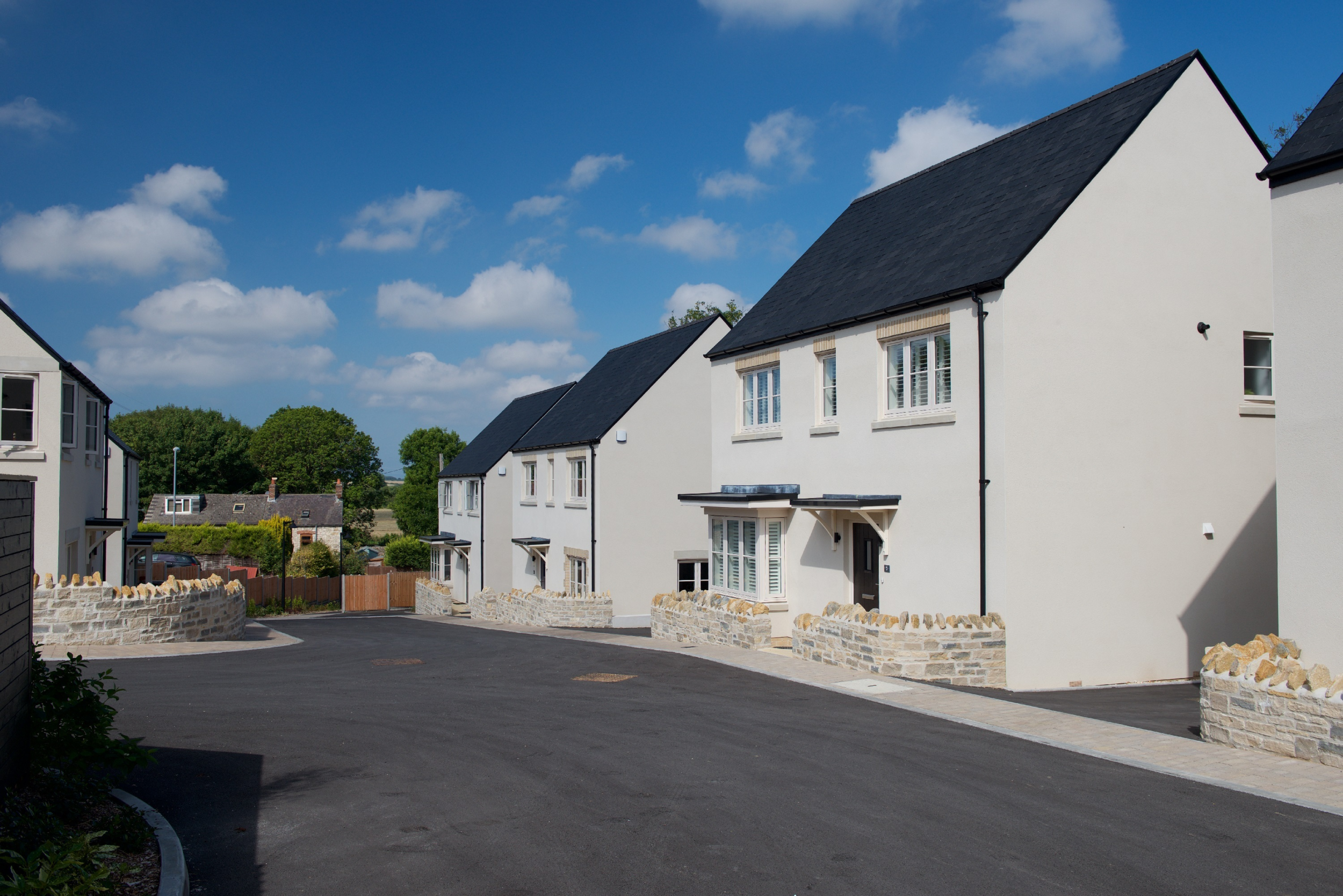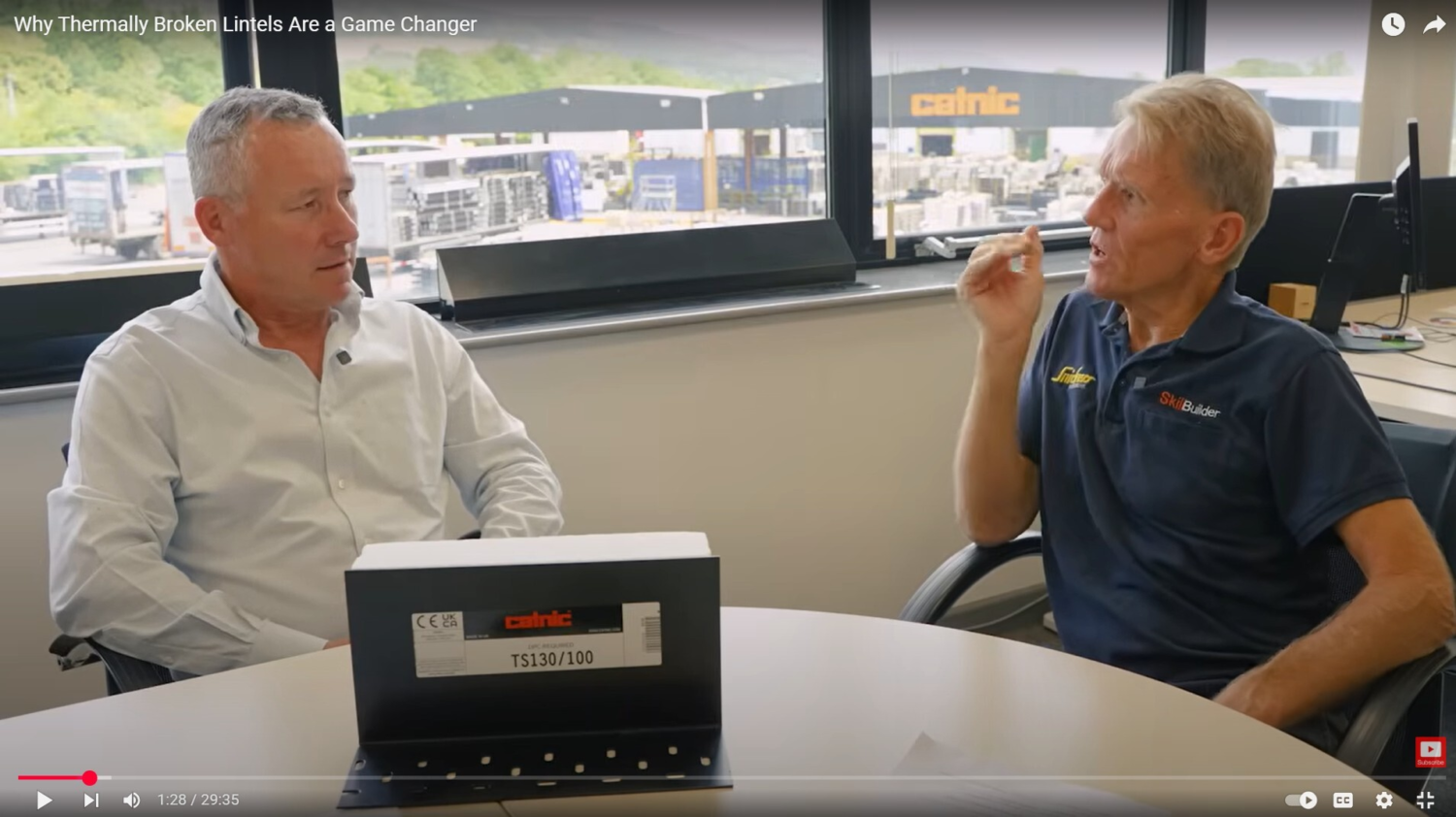With the publication of the technical detail for Part L 2021, we have seen the first step towards the much-heralded Future Homes Standard being adopted as part of the Building Regulations in England. The government consulted on changes to Part L (conservation of fuel and power) and Part F (ventilation) for new dwellings and has now finalised the proposals based on the responses received.
High standards of building fabric performance are required, including reducing thermal bridging heat losses. The good news is that solutions to achieve that, such as thermally broken cavity wall lintels, already exist. These lintel solutions can be used to help achieve compliance with current (as well as future) regulations. Their installation will also reduce carbon emissions from dwellings.
This post describes the introduction of Part L 2021 and the Future Homes Standard, which is specific to the Building Regulations in England. While different updates will be made in the other countries of the UK, the principles of good building fabric and junction detailing will be no less relevant.
What is the timeline for Building Regulation updates and the new Part L?
The Covid-19 pandemic delayed the planned updating of the Building Regulations in England. However, the updates were finally introduced over the course of 2022 and 2023. The government also set out a timetable for the implementation of the Future Homes Standard with the end goal of achieving zero carbon emissions by 2050.
The updated building regulations came into effect in June 2022, with new rules applicable to the building, extension, and renovation of properties. These rules would also have a bearing on the work of architects and tradespeople.
They set out new standards for the reduction of carbon emissions and energy use during home improvements. However, previous rules may still apply, depending on how far you are through the planning process.
The regulatory updates have been applied to Approved Documents Part L (Conservation of fuel and power), as well as Part B (Fire Safety), and Part F (Ventilation). They mainly fall within the scope of the government’s Future Homes Standard and Future Buildings Standard, which are both scheduled for introduction in 2025.
Here’s a Part L building regulations summary:
- Applying to all newly built dwellings and refurbishment of existing buildings
- Specifying the prioritisation of fuel and power conservation in the building of new dwellings
- Introducing a host of changes covering everything from supply chain sourcing to the proof of energy efficiency
- Specifically highlighting the need to take and share photographic evidence through a project’s lifecycle
The setting of such interim ‘uplift’ regulations has been deemed essential in allowing construction industry supply chains the time to mature. With the upcoming implementation of the Future Homes Standard, there must be sufficient expertise for the replacement of traditional gas boilers with low-carbon heating systems.
What does part L of the building regulations cover in relation to building fabric standards?
As has been the case since 2006, new dwellings will be assessed for compliance with Part L using the Standard Assessment Procedure (SAP). A new version of SAP - SAP 10 - has been developed alongside the new proposals. It will be updated further in response to the consultations, with the intention that SAP 10.3 is implemented at the same time as Part L 2021.
In SAP, the performance of the proposed dwelling is compared to the performance of a theoretical ‘notional’ building. For Part L 2021, the proposed dwelling must better the notional dwelling in the following metrics.
- Primary energy (which measures the regulated energy use of the dwelling, taking into account decarbonisation of the grid).
- CO2 emissions (an existing metric).
- The fabric energy efficiency standard (FEES, and an existing metric).
The use of SAP allows flexibility in the building fabric specification. However, minimum standards for fabric and fixed building services must continue to be met. If the designer chooses, however, they can copy the notional specification like-for-like in the knowledge that the dwelling will comply.
In Part L 2021, the notional dwelling specification uses the following U-values.
- External walls - 0.18 W/m2K
- Floors - 0.13 W/m2K
- Roofs - 0.11 W/m2K
- Doors - 1.0 W/m2K
- Windows and rooflights - 1.2 W/m2K
These values do not represent a significant change over the values in Part L 2013, meaning the 31% overall reduction in carbon emissions will come from other parts of the specification, such as improvements in airtightness. It will also come from reductions in thermal bridging heat losses.
Addressing thermal bridging heat losses in Part L 2021
Thermal bridging heat losses have been a feature of Part L compliance since SAP was introduced. As building fabric U-values have improved over time, thermal bridging has become responsible for an increasing proportion of total heat loss. The treatment of junction details - such as around door and window openings, or at floor/wall and wall/roof junctions - has not typically kept pace.
Some projects still choose not to properly account for the heat loss through these linear thermal bridges. Rather than inputting specific psi values (measures of thermal bridging heat loss) into SAP, default values are used. Default values penalise the performance of the proposed dwelling and require it to compensate elsewhere to achieve compliance.
Not only that, but when poorly performing thermal bridges are constructed on-site, they cause issues for the occupants of the finished building. The rates of heat loss at thermal bridges compared to the surrounding fabric cause discomfort. And, if a thermal bridge gets cold enough, condensation can form on the surface and eventually lead to mould growth.
The option to use default values, and subsequent penalty to performance, remains in Part L 2021. With the tighter overall standards, however, it will be even harder to achieve compliance through compensating elsewhere.
Using accurate psi values to demonstrate Building Regulation compliance
The message from the publication of the finalised Part L 2021 proposals is clear: it will be even harder to justify not inputting accurate psi values into SAP.
Even for designers who use psi values, some things are changing. Accredited construction details (ACDs) have long been available as a source of typical junction constructions, with accompanying calculated psi values. Those values are no longer seen as being sufficiently high performance for the new requirements, however, meaning ACDs are being removed as an option.
Psi values for compliance calculations will now have to come from bespoke thermal bridging models or other libraries of details. One option is to use values supplied by construction product manufacturers to demonstrate the performance of their solutions, and you can discover Catnic's using our psi value calculator.
For example, one-piece lintels are the preferred solution for structural support over openings in masonry cavity walls. Different designs of lintel offer different levels of performance. Even in those lintels that feature integral insulation, if the steel body spans the complete width of the wall, then it is providing a path for heat loss through the wall’s insulation layer.
Thermally broken lintels feature a design where the steel body is not continuous, and the amount of heat energy conducted is significantly lower. The thermal bridging heat loss through the door or window head detail featuring the lintel is significantly reduced.
Ensure building regulation compliance with thermally broken lintels
There’s been a longstanding focus on the reduction of thermal bridging heat losses within the building regulations. Part L has made this an even greater priority, with psi values having to be taken into account.
With low psi values of between 0.02 and 0,05 WmK, Catnic’s thermally broken lintels can make the difference in minimising heat loss from door and window head details.
Request a brochure or get in touch with Catnic to find out how you can ensure building regulations compliance with thermally broken lintels.
More
-
![]()
- Plaster Bead & Mesh
- Guide
How to Fix an Angle Bead to Plasterboard
-
![]()
- Lintels
- Guide
Why thermally broken lintels are a game changer


